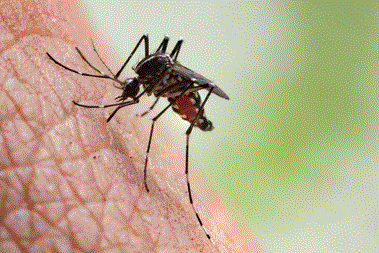
What to do for insect bites (wasps, horseflies, mosquito, spider, etc.)
Share
What to do for insect bites (wasps, horseflies, mosquito, spider, etc.)
Insects, spiders or parasites Symptoms
- Mosquito Bite: Small round, red, swollen bump with a strong urge to scratch
- Tick: Unusual appearance of a black ball (the body of the tick).
- Fleas: Appearance of red spots in clusters, accompanied by itching. They are not very painful.
- Wasp: Swollen, red and painful area with severe itching. It can sting several times and does not leave a stinger in the skin.
- Bee: Appearance of acute, sharp pain immediately after the sting. The area is red, blistered and itches badly. After its sting, the bee leaves its stinger in the skin, which continues to inject venom. It is advisable to remove it as quickly as possible.
- Hornet: Intense, sharp pain, itching, generalized swelling which may be followed by difficulty breathing. It measures 35 mm on average and can sting several times.
- Horsefly: Localized redness, burning sensation, severe pain, blistering and itching. Contrary to popular belief, the gadfly does not sting: it bites.
- Spider: Red and itchy bump, sometimes accompanied by muscle pain. The bite is sometimes recognized by the presence of two small holes close together in the centre of the pimple.
- Ant: Appearance of small red and swollen, itchy pimples. If they are fire ant bites (poisonous red or black ants), they appear as red, swollen spots with a burning sensation. Symptoms disappear quickly after a few hours, unless a fire ant is the cause.
-
Centipede: They inflict painful bites, causing swelling and redness. Symptoms rarely persist beyond 48 hours. Centipedes do not bite, but can secrete an irritating toxin, particularly when accidentally rubbed into the eye.
-
Certain large, colourful species (yellow legs, green head and orange rings) of 50 cm long centipede are excessively venomous and death occurs due to cardiac and respiratory arrest within 20 minutes after contact with the skin, here no need for a bite, so always be careful to keep a distance of 10 feet between your body and this type of insect.
Most insect bites can be immediately relieved. To deflate it and avoid the risk of infection, here is the procedure to follow:
- Remove the stinger To avoid pressing on the venom pocket and releasing more under the skin, the use of tweezers is not recommended. To remove it, take a flat, flexible object (like a credit card) and slide it parallel to the surface of the skin. If you are stung by hand, remove your jewellery to facilitate blood circulation.
- Suck up the venom: Suck up the venom, pump vacuum works for insect bites, but also for spider bites. As its name suggests, it helps suck out some of the venom and relieve the itching. Very practical, it fits easily into a first aid kit or hiking bag. Our advice: practice using the pump before using it for the first time.
- Disinfect the wound: Clean the puncture site area with soap and water, then apply an antiseptic solution.
- Relieve itching: To avoid causing infection, avoid scratching the swollen area. Instead, apply cold (ice pack) or a calming anti-itch cream. Reduce pain. It is possible to reduce pain with an over-the-counter analgesic (unless contraindicated). For mosquitos, we recommanded some drop of lemon juice on the bump.
Insect bites: is it serious? After an insect bite, three reactions can occur:
- Not serious or benign: in the majority of cases, the bite is benign and heals quickly after a few days;
- Toxic: if the bites are numerous or from a dangerous species;
- Allergic. During a toxic and/or allergic reaction, serious symptoms appear, such as:
- difficulty breathing or swallowing;
- dizziness; nausea or vomiting;
- swelling (tongue, lips, throat, eyes, etc.);
- skin rashes with severe itching.
